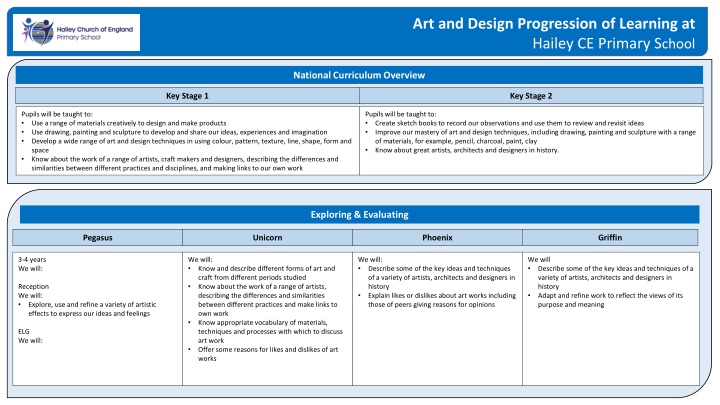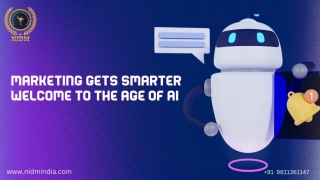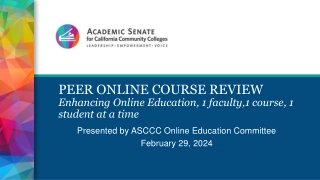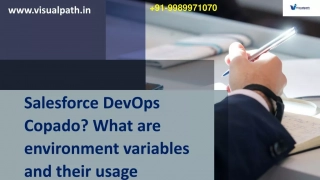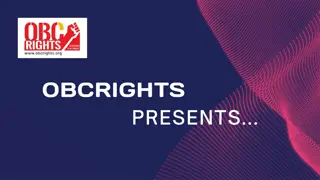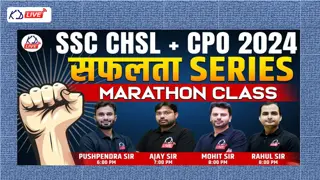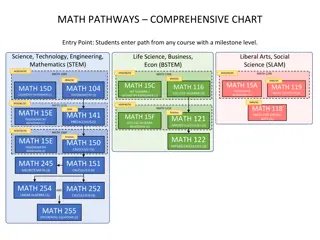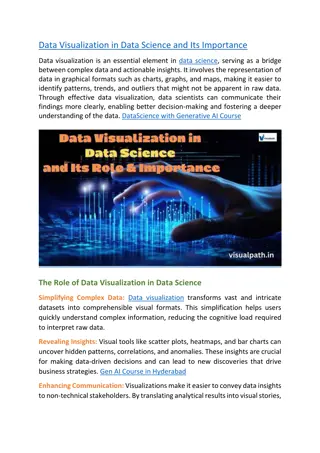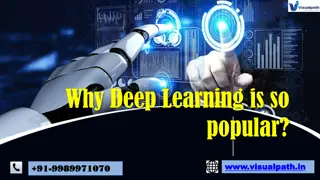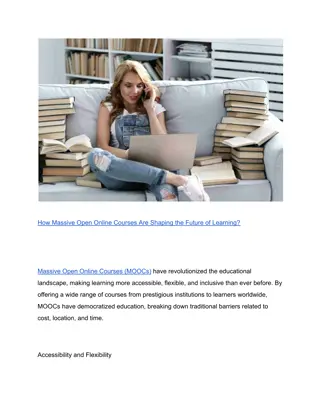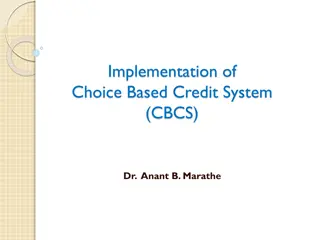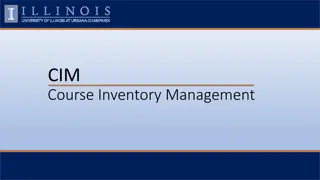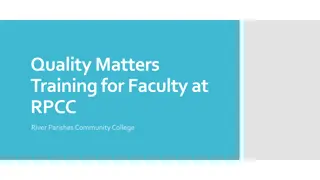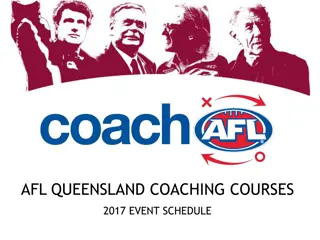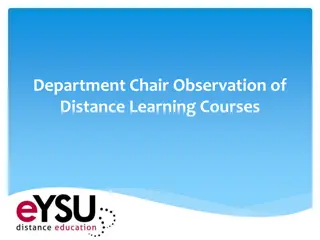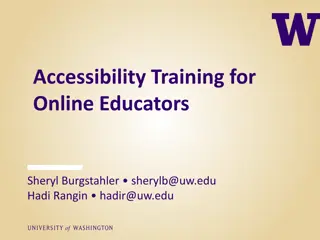Online Learning Courses by Dr. B.T. Sampath Kumar
Online learning courses by Dr. B.T. Sampath Kumar, Professor at Tumkur University, India, offer a flexible way to learn new skills, advance careers, and enhance educational experiences globally. Explore the significance of MOOCs and the SWAYAM initiative in providing accessible education opportunities.
Download Presentation

Please find below an Image/Link to download the presentation.
The content on the website is provided AS IS for your information and personal use only. It may not be sold, licensed, or shared on other websites without obtaining consent from the author.If you encounter any issues during the download, it is possible that the publisher has removed the file from their server.
You are allowed to download the files provided on this website for personal or commercial use, subject to the condition that they are used lawfully. All files are the property of their respective owners.
The content on the website is provided AS IS for your information and personal use only. It may not be sold, licensed, or shared on other websites without obtaining consent from the author.
E N D
Presentation Transcript
Art and Design Progression of Learning at Hailey CE Primary School National Curriculum Overview Key Stage 1 Key Stage 2 Pupils will be taught to: Use a range of materials creatively to design and make products Use drawing, painting and sculpture to develop and share our ideas, experiences and imagination Develop a wide range of art and design techniques in using colour, pattern, texture, line, shape, form and space Know about the work of a range of artists, craft makers and designers, describing the differences and similarities between different practices and disciplines, and making links to our own work Pupils will be taught to: Create sketch books to record our observations and use them to review and revisit ideas Improve our mastery of art and design techniques, including drawing, painting and sculpture with a range of materials, for example, pencil, charcoal, paint, clay Know about great artists, architects and designers in history. Exploring & Evaluating Pegasus Unicorn Phoenix Griffin 3-4 years We will: We will: Know and describe different forms of art and craft from different periods studied Know about the work of a range of artists, describing the differences and similarities between different practices and make links to own work Know appropriate vocabulary of materials, techniques and processes with which to discuss art work Offer some reasons for likes and dislikes of art works We will: Describe some of the key ideas and techniques of a variety of artists, architects and designers in history Explain likes or dislikes about art works including those of peers giving reasons for opinions We will Describe some of the key ideas and techniques of a variety of artists, architects and designers in history Adapt and refine work to reflect the views of its purpose and meaning Reception We will: Explore, use and refine a variety of artistic effects to express our ideas and feelings ELG We will:
Drawing Pegasus Unicorn Phoenix Griffin 3-4 years We will: Draw with increasing complexity and detail, such as representing a face with a circle and including details Use drawing to represent ideas like movement or loud noises Show different emotions in our drawings and paintings, like happiness, sadness, fear, etc. Use a comfortable grip with good control when holding pens and pencils We will: Experiment with a range of media: pencils, crayons, pastels, charcoal, chalks Name, match and draw lines and marks from observation Draw on different surfaces with a range of media Working from memory and imagination use line to create patterns and represent objects seen, remembered or imagined working spontaneously and expressively Use drawing tools with increased control to investigate marks and represent observations, memories with purpose and intention Draw carefully in line from observation, recording shape and positioning all marks and features with some care Experiment tone by drawing light and dark lines, light and dark patterns and light and dark shapes using different grades of pencils as well as different amounts of pressure Observe and draw shapes from observation Make large- and small scale observational drawings Look at objects from different angles Investigate shading techniques, experimenting with light and dark Experiment with chalk and charcoal to make line and shape drawings adding light and dark tone, colour and features We will: Make marks and lines with a wide range of drawing implements charcoal, pastel, chalk, pencil Experiment with ways in which surface detail can be added to drawings Experiment with different grades of pencil to create lines and marks Experiment with different grades of pencils to draw different forms and shapes with different media to achieve a range of light and dark tones, black to white Draw objects from different viewpoints: above, below, front, back. Plan, refine and alter our drawings as necessary Show in our drawings that objects have a third dimension Use different grades of pencils and other drawing implements to achieve variation in tone Apply tone, pattern and texture to a drawing in a simple way Experiment with different shading techniques of hatching and cross hatching We will: Work from a range of sources including observation and photographs Work in a sustained and independent way to create drawings Use simple perspective in our work using a single focal point and horizon Show an awareness of proportion in drawing objects and figures Develop close observational skills using a variety of view finders Use different techniques for different purposes e.g. shading, hatching etc Develop an awareness of scale and proportion in our drawings of landscapes e.g. foreground, middle ground and background Investigate how shadow can be shown when drawing objects Experiment with different shading techniques of hatching, cross hatching, scrumbling, stippling and blending/smudging Explore colour mixing and blending techniques with coloured pencils Use a variety of dry and wet media to make marks, lines, patterns, textures and shapes Start to develop our own style using tonal contract and mixed media Reception We will: Explore, use and refine a variety of artistic effects to express our ideas and feelings ELG We will: Use a range of small tools, including scissors, paint brushes and cutlery
Painting Pegasus Unicorn Phoenix Griffin 3-4 years We will: Explore colour and colour mixing We will: Experiment with painting with different brush sizes and types Name the primary colours and identify them on a colour wheel and in other forms e.g. environment, magazines Mix primary colours to make secondary colours, predicting resulting colours Find collections of colours Control the types of marks made with a range of painting techniques e.g. layering, adding texture Select and use different brushes to explore and make marks of different thicknesses and using wet and dry paint techniques Mix paint to make secondary colours, adding them to the colour wheel Explore lightening and darkening paint without the use of black or white Experiment with different types of paint powder, ready mix Create textured paint by adding sand, plaster etc for an intended effect Work on different scales Use a brush to produce marks appropriate to work e.g. small brush for small marks Know how to mix primary colours to make brown Explore adding white to a colour to make tints Explore adding black to a colour to make shades Mix and match colours to artefacts, objects, given colours We will: Experiment with different effects and textures e.g. blocking in colour, washes, thickened paint creating textural effects Experiment with applying colour in different ways e.g. dotting, stippling, scratching, splashing Use light and dark when painting, mixing shades and tints with increasing confidence and Create different effects and textures with paint according to what is needed for a task Use light and dark within painting and show understanding of complimentary colours Mix tints and shades with increasing confidence Build on understanding of the colour wheel, storing information through investigation on a colour spectrum Explore complementary colours colours opposite each other on the colour wheel Work on different scales, selecting suitable brush size and type Introduce watercolour paints to create wash backgrounds Experiment with different types of paint and making own paint Investigate how artists use warm and cool colours create and use in own work building on understanding of tints and shades Look at how artists paint foregrounds and backgrounds for perspective Work with increasing detail, using appropriate brushes and paints We will: Confidently control types of marks made and experiment with different effects and textures Mix and match colours to create atmosphere and light effects Mix colours, shades, tones and tints with confidence Develop and create a painting from a drawing Work with sustained independence and confidence to develop our own style of painting Use a range of effects to convey mood/feeling in our work Mix colour, shades, tints and tones with confidence and to achieve an intended effect Use watercolour paints and small brushes to develop detail Compose using fore, middle and background Create images with lots of tone but using only one colour - monochrome Use watercolour pencils Use painting techniques as part of a mixed media art project Explore how artists have used colour, texture and movement to express emotions e.g. in self- portraits Choose the type of paint and tools to use for a particular purpose e.g. watercolour for design work, washes, thick paint etc Reception We will: Explore, use and refine a variety of artistic effects to express their ideas and feelings ELG We will: Use a range of small tools, including scissors, paint brushes and cutlery
Printing Pegasus Unicorn Phoenix Griffin 3-4 years We will: We will: Print with a range of hard and soft materials e.g. corks, pens, cotton reels, sponges Take rubbings to understand and inform our own textured prints and patterns Monoprint by marking into ink, or drawing onto the back of paper which has been placed on ink, controlling line and tone using tools or pressure Create repeating patterns Create simple relief printing blocks e.g. with string and card Make simple monochrome prints Experiment with overprinting motifs and colour We will: Work in greater detail when relief printing - making printing blocks Use two colour overlays when relief printing Explore lines, marks, shapes and tones through monoprinting (using polystyrene tiles) Print with two colour overlays Create repeating patterns Design a complex pattern made up from two or more motifs and printed a tiled version Combine prints to produce an end piece We will: Create designs for prints by simplifying initial drawings/sketches Extend printing methods using Collagraph (on card/lino) Show increasing use of printing tools to control line, shape, texture and tone Colour mix through printing, create prints with at least three colour overlays Use printing techniques as part of a multi-media project e.g. print onto dyed fabrics Reception We will: Explore, use and refine a variety of artistic effects to express our ideas and feelings ELG We will: Use a range of small tools, including scissors, paint brushes and cutlery Sculpture & Form Pegasus Unicorn Phoenix Griffin We will: Explore sculpture with a range of natural materials e.g. leaves, stones, feathers, shells Experiment with constructing and joining recycled, natural and manmade materials Manipulate malleable materials in a variety of ways including rolling, pinching, kneading and shaping Manipulate malleable materials e.g. salt dough, play dough, plasticine, clay for a purpose e.g. create a tile, simple pot, animal Develop slab techniques - change the surface of a malleable material e.g. adding texture to a tile We will: Make 3D models by constructing materials and using Papier Mache and paint to add a final finish Plan, design and make models from observation or imagination Join clay, constructing a simple tile base and then layering/joining shapes onto it to create 3D form Manipulate clay to create a simple thumb pot Create surface patterns and textures onto clay looking at cultural decoration from historic time periods We will: Manipulate materials to make a new 3D form e.g. human figure Use covering materials such as Modroc or modelling clay to create 3D models Add final finishes to models using paint/glazing techniques Use clay to create a coil pot using joining techniques to add detail e.g. handles Use smoothing techniques to create a desired finish before painting
Textiles Pegasus Unicorn Phoenix Griffin We will: Match and sort fabrics and threads for colour and texture Change and modify threads and fabrics - knotting, fraying, plaiting, twisting, pulling threads Add shapes with glue or stitching Apply decoration using beads, buttons, feathers etc Apply colour using printing, dying, fabric crayons Cut and shape fabrics Join two pieces of fabric using stitching Weave materials e.g. carrier bags or ribbon onto a bike wheel, natural materials on a weaving board looking at colour and texture We will: Use a variety of techniques e.g. printing, dyeing, weaving, stitching to create different textural effects Extend understanding of joining fabrics by using more than one type of stitch (running and cross stitch) Experiment with adding detail to fabric by gluing or stitching Add colour and pattern to fabric using dyes, printing and resist paste and batik Weave paper and found materials to represent an image e.g. landscape We will: Use fabric to create a 3D art form Use a number of different stitches creatively to join fabrics and create patterns/textures Use a range of techniques to add decoration e.g. plaiting, pinning, stapling, stitching, sewing Produce a two-colour dye Add colour and pattern to a fabric using batik with more than one colour Combine techniques to produce an end piece e.g. embroidery over tie dye Collage Pegasus Unicorn Phoenix Griffin We will: Create images from a variety of media e.g. magazines, fabric, crepe paper Arrange and glue materials to different backgrounds Sort and group materials by properties e.g. colour and textures Collect, sort, name and match colours appropriate for an image Create and arrange shapes appropriately Select and use textured paper for an image Fold, crumble, tear and overlap papers and other materials Work on different scales We will: Develop skills of overlapping and overlaying to place objects in front or behind in a collage Experiment with techniques to make mosaics Experiment with creating mood, feeling, movement and areas of interest using different media Use collage as a means of collecting ideas and information and building a visual vocabulary We will: Experiment with a range of media to overlap and layer, creating interesting colours and textures and effects Embellish a surface using a variety of techniques, including drawing, painting and printing Select and use found materials with art media and adhesives to assemble and represent an image or stimulus
